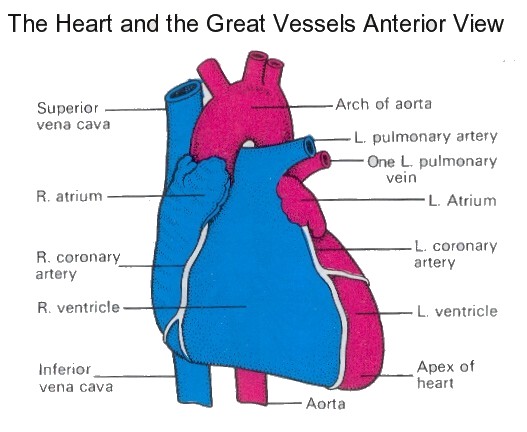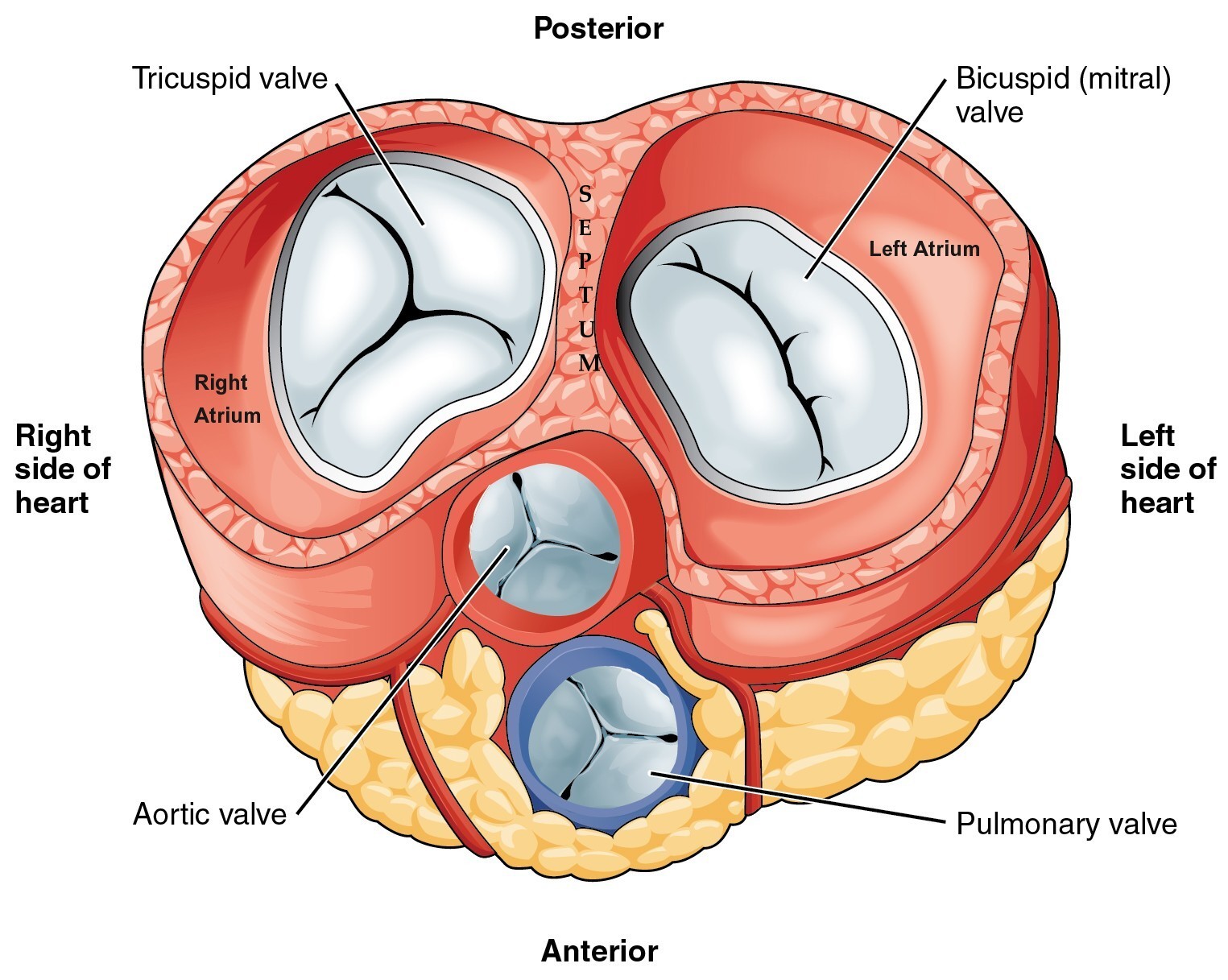The Right Atrium
Definition
One of the four hollow chambers of the interior of the heart
Situation
located in the upper right corner of the heart superior to the right ventricle
located to the right of the left atrium
superior to the much larger and more muscular right ventricle
Structure and Function
Between the right atrium and right ventricle is a one-way valve - tricuspid valve
The muscular walls of the right atrium are much thinner than those of the ventricles
It has a wrinkled flap, shaped like a floppy dog ear, known as the auricle.
The auricle is hollow and extends outward from the anterior surface to increase the internal volume of the right atrium.
Deoxygenated blood enters the right atrium through three major veins viz.
- Superior Vena Cava - blood from head, neck arms and upper thorax
- Inferior Vena Cava - blood from legs abdomen and lower thorax
- Coronary Sinus - blood from the exterior of the heart itself
It is separated from the right atrium by interatrial septum
During intrauterine life there is a small hole in the interatrial septum called foramen ovale allowing blood to flow to the left atrium also to reduce the amount flowing to the inactive lungs
At birth, a small flap of tissue moves to cover the foramen ovale and prevent the flow of blood between the atria.
The right atrium also contains the sinoatrial (SA) node, the pacemaker of the heart.
It pumps blood into the right ventricle through the Tricuspid valve




